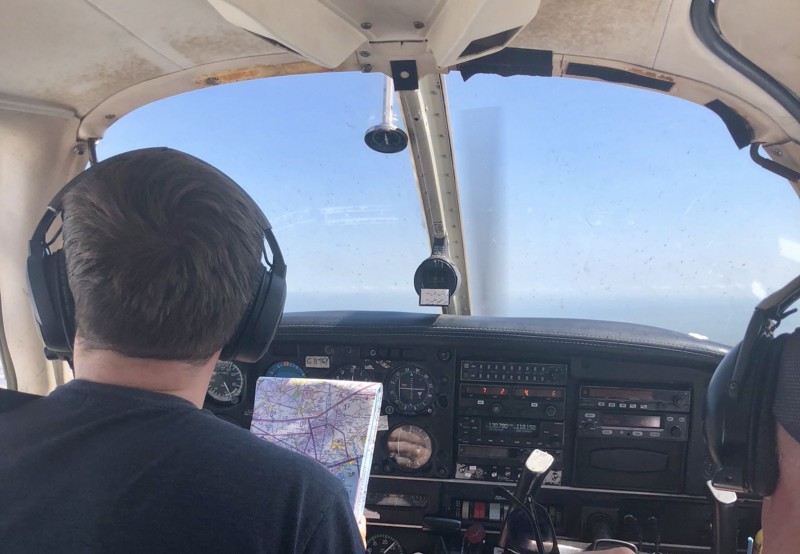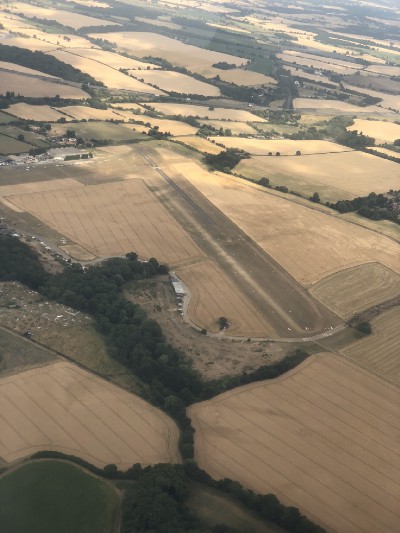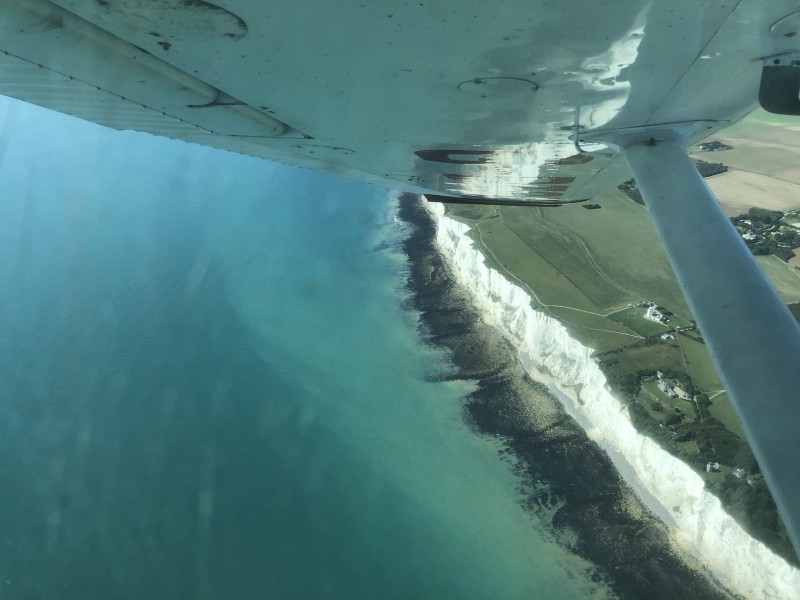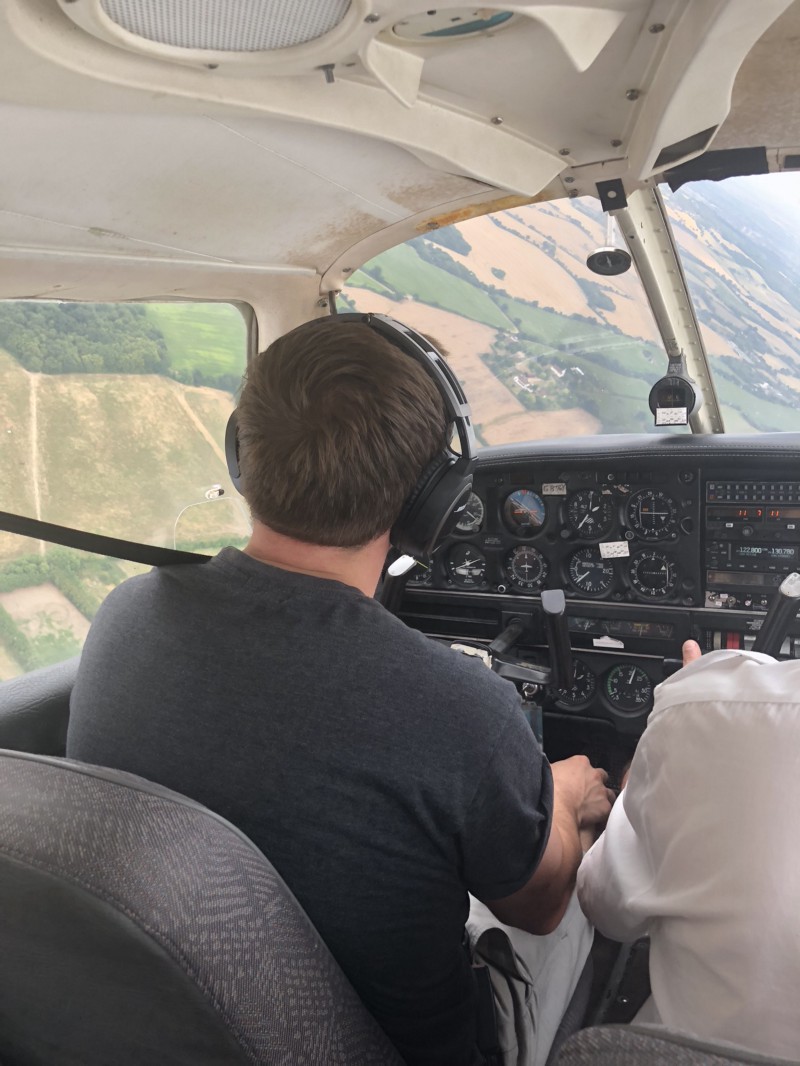Ever since I was a boy, becoming a pilot has been the ultimate dream. Now, as a graduate earning a real salary, it was finally time to take to the skies and obtain my Private Pilot’s License (PPL). I want to share my experience and summarise the key costs and considerations to make before undertaking training; with a few pictures and stories of my journey along the way.

The requirements to pass
Before exploring the costs it’s worth while considering what takes place during training:
-
Fly for 45 hours: at least 10 of which have to be solo flying and the rest with an instructor (dual)
-
Pass a flying skills test with an examiner (the aviation equivalent of the driving test)
-
Pass 9 ground school exams covering a wide selection of theory including navigation, radio communications and the principles of flight (the aviation equivalent of the driving theory test)
-
Pass a radio practical exam which tests how to communicate over the radio using the correct terminology
-
Pass a Class 2 medical examination with an approved Aeromedical Examiner (AME)
Aircraft Hire, Fuel & Instructor Time
When learning to fly it’s normal to be hire out the aircraft from a local flying school, the cost of which is usually quoted per hour of use and includes fuel and the instructor rate. Some schools may charge a fuel surcharge rate which is typically on the order of £1–3/hr. This gives the school the ability to cover the costs of the fluctuating fuel price.
I undertook my training at Stapleford Flight Centre in Essex- North East of London. At the moment, the price of hiring a training aircraft with fuel and an instructor is:
-
Cessna 152 (2 seat aircraft): £179/hr
-
Piper Warrior (4 seat aircraft): £205/hr
The 152 and Warrior are two of the most popular training aircraft but there are others to choose from. I quote these two models because they’re what I trained on.
Like many flying schools, Stapleford offer a 10% discount on bulk buying hours, I ended paying up front £6,619 for 45 hours on the Cessna 152. Part way through my training I decided to convert to the more expensive Piper Warrior so that when I get my license I would be able to carry passengers- this took about 4 hours and I had to pay the difference between the aircraft rates at the end.
Note- 45 hours of flying must be completed before sitting the skills test. Therefore, I had to pay for the skills test (for me it was £150) plus the cost of hiring the aircraft for ~2 hours.
In total I spent:
-
£76.50 on a 30 min trial flight at the start of training
-
£6,619 on 45 hours of Cessna time
-
£210.75 difference on converting to the Piper
-
£331.50 for hiring the Cessna during my 2 hr 10 min skill test
-
£150 skills test
= £7,401.93

Airfield Fees
When landing at most UK airfields a landing fee will be charged. This fee is to cover the cost of maintaining the runway, taxiways and apron and it can vary hugely depending on the airfield. Larger airfields that operate more commercial flights will charge a premium because the demand is much higher.
The flying school will charge a club membership fee on an annual basis to cover insurance and most also include the landing fees there. This is because during training a typical lesson may include many landings- it would not be affordable for the average person. Club membership is usually a few hundred pounds per year.
However, be aware that when flying cross-country the cost of landing fees at other airfields still needs to be paid. My qualifying solo cross country flight consisted of landing first at Lydd Airport (south coast) then at Earls Colne (Essex). Before flying to these airfields solo it is required to first go with an instructor which means the landing fees are incurred twice. One of these should also be a controlled airport (with a tower).
In total on airfield fees I spent:
-
£45.60 on 2x landing fees at Lydd Airport
-
£30 on 2x landing fees at Earls Colne
-
£75 on Stapleford club membership (it’s usually £150/year but I joined half way through)
= £150.60

Ground School, Exams & Radio Practical
Each ground exam costs £25, a senior flying instructor from the school will collect this after each of the 9 multiple choice exams. It’s a good idea to buy the books to help with learning. These can cost anywhere between £10–23 but on average they’ll be £18–20 (Amazon sell them). The most crucial thing to help pass the exams is the ppl tutor app (https://ppltutor.com/) which costs £20: this is the best way to pass the exams (but not necessarily to learn) as it has a load of questions that will probably come up in the actual exam. The radio practical exam is conducted at the flying school, I had to make all the right radio calls during a simulated flight displayed on a computer screen.
In total I spent on ground school exams, prep & radio:
-
£225 ground exams
-
£60 radio practical
-
~£180 books
-
£20 PPL App
= ~£485
Medical Exam
There are very few places to get a class 2 medical certificate, some schools may have a registered AME doctor who occasionally visits but they’ll be booked up for a while. It’s not possible to go solo without a medical certificate so it’s recommend this is done at start of training. As frivolous as it sounds, I got my certificate from a private doctor on Harley street in London because A) the AME was available on the day I needed him and B) the cost of the examination is pretty consistent across the UK.
In total I spent on a class 2 medical certificate:
-
£210 for an AME to examine me and sign a certificate
-
£25 on an eye test at a pharmacy which will need to be done prior to seeing an AME
= £235
The Headset
This is an essential piece of kit and warrants a section of its own. Flying general aviation aircraft can be very loud, I therefore recommend buying a good headset with active noise cancelling technology- the Bose A20 headset. This set me back £999 and admittedly there are much cheaper headsets out there but, most people will almost certainly end up getting a pair. Even the “cheap” headsets cost £300 so there’s no point owning two pairs of headphones at the end of the day.
In total I spent on a Headset (/invested in my comfort):
- £999 Bose A20 Headset https://www.bose.co.uk/en_gb/products/headphones/aviation_headsets/a20-aviation-headset.html
= £999
Equipment
There’s some basic equipment needed for use in the air and on the ground. This includes a 1:500,000 or 1:250,000 inch map for navigation, protractor square and scale ruler (special ones for use on aeronautical maps), marker pens, whizz wheel (calculates all sorts of things such as wind speed, pressure altitude, fuel consumption rate and headings), log book to record flying hours in, a fuel rod to check the quantity of the fuel tanks, fuel testing tube, a diversion ‘computer’ (basically a fancy ruler), a kneeboard to keep navigation essentials in one place during the flight, flight planning logs (Plogs) and finally a checklist for each aircraft type.
Because these purchases were made throughout my training, I cannot remember exactly how much each item was, however, I have the grand figure.
In total on basic flying equipment I spent:
- £ 137.13 on the items listed above
=£137.13
The License Fee
I’ve passed my test! I’ve passed my ground exams and radio practical! that’s it, right? Unfortunately no, the Civil Aviation Authority (CAA) charge £201 for the cost of issuing a license and sending it in the post. And, after the UK leaves the EU, the CAA will have to re-issue licenses so they are recognised by European Aviation Safety Agency (EASA). There’s a good chance pilots will have to pick up this additional fee.
In total on the license fee I spent:
- £201 on PPL(A) license which also includes an amateur radio license
= £201
Putting it all together
Adding up each of the sections we find that flying is a very expensive hobby:
-
Aircraft Hire, Fuel, and Instructor Time = £7,401.93
-
Ground School, Exams, and Radio Practical= ~£485
-
Medical Exam = £235
-
The Headset = £999
-
Equipment =£137.14
-
Airfield Fees = £150.60
-
License Fees= £201
= £9,609.67
Final Thoughts
I thoroughly enjoyed learning to fly and would recommend it to anyone who has a passion for aviation. It is however a huge financial commitment which I have hopefully demonstrated during this article. I wrote this because a lot of flying schools are not upfront about the costs associated with flying, for example, I was not told at the start of my training the cost of the license would be £201. Yes, this isn’t a huge sum of money in comparison to the many thousands I had already spent but, it does make it financial planning difficult when the aviation industry drops these costs randomly onto you.
Nevertheless, the continued costs associated with flying will not be putting me off enjoying my license now I have it. Good luck to those who decide to take on the challenge!
